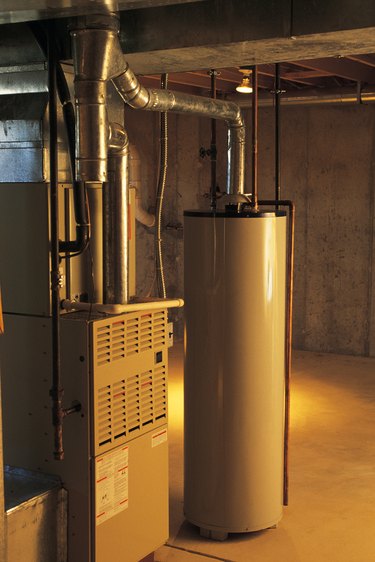Things You'll Need
Garden hose
Pliers
End wrenches

Oil fired boilers provide household heat for homes not heated by electricity, natural gas or propane. Oil fired boilers are economic and relatively easy to maintain as long as scheduled maintenance is carried out at regular intervals. These boilers also appeal to people who do not have natural gas lines in their area, such as rural communities that are geographically isolated. During periodic maintenance, you should drain the oil boiler to permit work on the plumbing lines, furnace or radiators. You can safely and easily drain your oil boiler system using a few basic tools and easy steps.
Step 1
Locate the main breaker switch for the oil boiler system and turn it off. Manually shut off the power supply or "On" switch to the boiler. Find the oil pump switch or shut-off valve and make sure it is turned off. Let the boiler cool down for one to two hours, or long enough that the tank is cool to the touch.
Video of the Day
Step 2
Run a garden hose of sufficient length into the room that houses the oil boiler. Look for the water drain valve at the bottom of the tank. It will have a plumbing connection with a screw thread on the end that serves as the drain tap.
Step 3
Screw the garden hose onto the drain tap and tighten it by hand, or twist it on snug with a pair of pliers. Run the other end of the hose to a basement sewer drain, or run the hose outside to a safe drain area.
Step 4
Find the pressure relief valve located next to the expansion tank or near the top of the tank. This could be a lever or knob, which you must open to allow air to displace the water, and can be done by hand. If it has a petcock type nut, use a socket to turn it until it registers "open" on the flange marking.
Step 5
Open the water outlet valve (drain valve), where you attached the hose. Let the water drain completely. Shut the water outlet valve off until all the water has drained from the tank and the garden hose. You can now perform service on the tank, oil boiler furnace, plumbing lines and radiators.
Tip
If you have bleeder valves on individual radiators, open these to facilitate the draining process.
Video of the Day